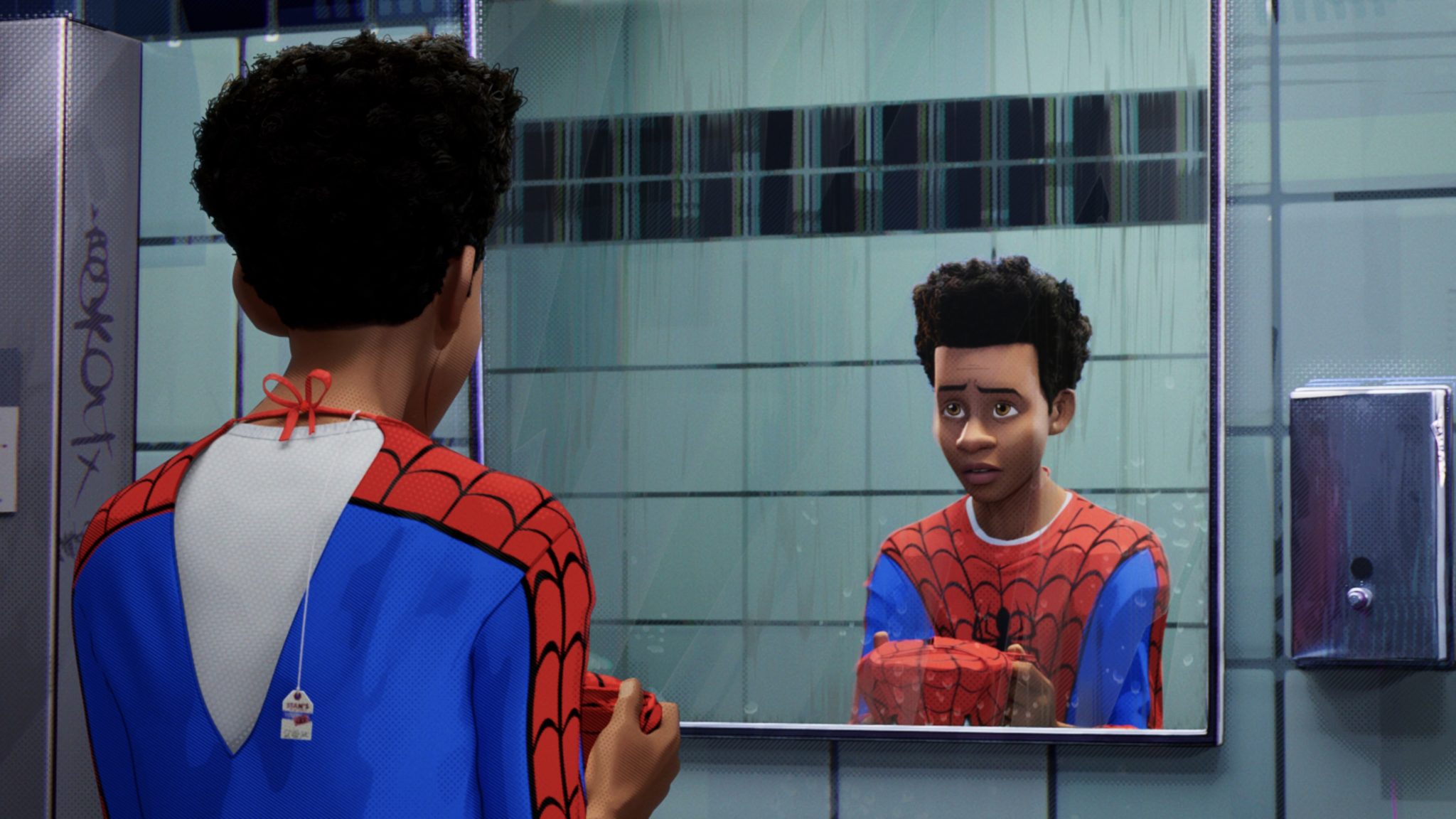“Animation is an iterative process, and it’s changing every step of the way,” said editor Robert Fisher Jr. at NAB earlier this month, discussing the creative collaboration that brought the widely acclaimed animated feature Spider-Man: Into the Spider-Verse to movie theater screens last year. To illustrate his point, Fisher came to a Monday morning panel session prepared to discuss those changes along with two key collaborators — assistant editor Sarah D. Cole and co-director Peter Ramsey. Moderated by Carolyn Giardina of The Hollywood Reporter, the discussion highlighted how a willingness to rethink dialogue, characters, and staging at every step in the process can make a big difference in the finished product.

Fisher began by summarizing the process of editing an animation sequence. It starts with storyboard panels, or sometimes just placeholder dialogue recordings. Those materials are assembled so that they adequately convey a sense of the look and feel of the finished scene. Once agreement is reached, the sequence is sent to layout, where camera angles and shots are assigned to it before it enters the actual animation process.
Some of the changes are simple tweaks that influence the tone or humor of a given scene. As an example, the panelists cited a scene where Miles Morales — a boy who, over the course of the movie, steps into the shoes of an alternate-universe Spider-Man — tries to get a handle on his superpowers by leaping from a tall building. In the film, Miles picks a skyscraper, then races up the stairs to the roof as heroic music swells on the film’s soundtrack. He steps to the edge of the building and the music reaches a crescendo as the film cuts to … a shot of Miles running back down the stairs, having decided he doesn’t (yet) feel quite so heroic after all.
The moment when Miles chickens out is so surprising in context, while striking a sympathetic character note, that it elicits a huge laugh from audiences. One key to making the joke land, Fisher revealed, was removing a voiceover monologue that had been used in earlier versions of the same scene. The scene was just funnier without it.
Some changes were more subtle and fundamental to the film’s visual grammar. Fisher screened an early storyboard assembly — created some three years ago, he noted — of the film’s first big action scene, where the Green Goblin fights Spider-Man (aka Peter Parker, a different Spidey) as Miles watches from below. The action was big and sufficiently comic-bookish in nature, but there was something missing — the audience wasn’t necessarily identifying with Miles Morales, and the action was almost a distraction, doing little to develop his character.
The scene needed “a sense of subjectivity to a specific character at a specific moment,” explained Ramsey. “We were, literally, just starting to work it out.”

The problem was the the scene had been staged and blocked out for an objective camera, which simply sought out the best angle on Green Goblin and Spider-Man, occasionally making room in the frame for Miles, watching from a distance. “We asked ourselves, ‘What will help the audience get into Miles’ thinking?’,” said Fisher. “What was going on emotionally as he watched Spider-Man fight the Green Goblin?”
The scene didn’t need to be torn apart or even restated. Ramsey credited co-director Bob Persichetti with working more subjectivity into the scene via camera positioning. When the camera captured the action from more subjective viewpoints — typically directly from Miles’ POV or just over his shoulder — it was easier for the audience to understand how he was experiencing the spectacle.
“You did a great job of integrating the audience, as well,” Cole noted. “Camera and staging is so important in that.”

Another big change? Doctor Octopus — that is, Olivia Octavius, voiced in the film by Kathryn Hahn — was originally written and performed as a man. ”Doc Ock used to be a man — but not just a normal Doc Ock, but a super-California hippie, tie-dyed, dreads,” remembered Cole. “Bob Persichetti recorded the voice as a hippie dude, sipping kombucha, trying to get method with it. It was vastly different, but ultimately I think this is way better — and, for me, a little bit of woman power.”
It’s a little bit of a left-field decision as far as traditional Spider-Man lore goes — but the Spider-Verse is all about twisting and inverting expectations in a separate creative sandbox from the Marvel Universe, so anything is fair game. At any rate, it brought the character to life.
The decision also fit with the creative intention behind the action scene introducing her character, which ended up containing key character notes between Miles and Peter. “This sequence could have been just an action sequence,” said Johnson. “We decided to include humor as Miles and Peter are starting to bond for the first time in the movie.”

Peter Parker and Miles Morales.
Sony Pictures Animation
”We thought, ‘Ah, we don’t have enough women in the movie,’” said Ramsey, crediting Persichetti with making the decision to cast Hahn in the role. “And the character wasn’t really coming alive. The moment we went with making her a woman, this whole character just exploded out of it.”
The session opened with a tribute to the late Norman Hollen, ACE (Heathers, Sophie’s Choice) who had been scheduled to moderate it before he passed away unexpectedly In Yokohama, Japan, where he was a guest lecturer at Tokyo University of the Arts.
Crafts: Editing VFX/Animation
Sections: Creativity
Did you enjoy this article? Sign up to receive the StudioDaily Fix eletter containing the latest stories, including news, videos, interviews, reviews and more.










